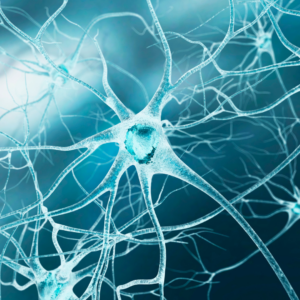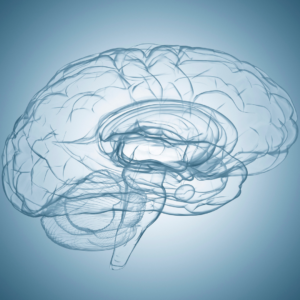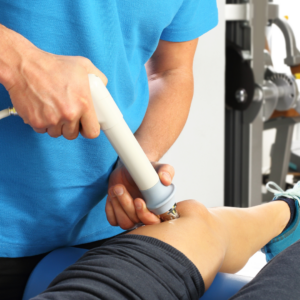Emerging Disruptors in Neurology
Worldwide – Virtually
November 19, 2025
Welcome to the Emerging Disruptors in Neurology Treatments Conference. Join investors, deal-makers and representatives from the neurology industry. Listen to CEOs of some of the most dynamic neurology companies discuss the latest innovations in neurology treatment. Don’t miss this opportunity to learn about groundbreaking treatments and technologies shaping the future of neurology. Attend virtually on November 19, 2025.

 The honest answer is that the market for neurological treatments is large but hard to quantify. The global neurology market was valued at approximately $3.88 billion in 2025 and is projected to grow to $7.57 billion by 2034. A broader estimate places the global neuroscience market at $612 billion in 2022, expected to reach $721 billion by 2026 with a CAGR of 4.2% across various neuroscience-related segments.
The honest answer is that the market for neurological treatments is large but hard to quantify. The global neurology market was valued at approximately $3.88 billion in 2025 and is projected to grow to $7.57 billion by 2034. A broader estimate places the global neuroscience market at $612 billion in 2022, expected to reach $721 billion by 2026 with a CAGR of 4.2% across various neuroscience-related segments.
The following are among the key drivers for the neurology industry:
Rising Prevalence of Neurological Disorders: Increasing cases of neurological disorders such as Alzheimer’s disease, Parkinson’s disease, epilepsy, and strokes are a primary driver. For example, in the U.S., around 6.9 million Americans aged 65 and older are living with Alzheimer’s, with the prevalence expected to rise as the population ages.
epilepsy, and strokes are a primary driver. For example, in the U.S., around 6.9 million Americans aged 65 and older are living with Alzheimer’s, with the prevalence expected to rise as the population ages.
Technological Advancements: Innovations in neuroimaging (e.g., PET, CT, MRI) and neurostimulation devices (e.g., deep brain stimulation, vagus nerve stimulation) are improving diagnostic accuracy and treatment outcomes. Artificial intelligence (AI) is transforming neurology through tools that enable personalized treatment recommendations and automated diagnoses.
Aging Population: The global aging population is a significant factor, as older individuals are more susceptible to neurological disorders like dementia and Parkinson’s disease.
Increasing Healthcare Investments: Governments and private organizations are investing heavily in neurology research and infrastructure. For instance, initiatives like the BRAIN Initiative in the U.S. have allocated substantial funding to advance neurological research. More specifically:
- The National Institute of Neurological Disorders and Stroke (NINDS) has allocated $2.83 billion for FY 2025, including funding for initiatives like the BRAIN Initiative and the Undiagnosed Diseases Network.
- The European Union is focusing on integrated responses to neurological health through initiatives like the GAP (Global Action Plan) and the EU NCD Initiative “Healthier Together.”
- Countries like China are heavily investing in neuroscience through projects such as the China Brain Project (CBP), which has a budget of $746 million under its latest five-year plan.
Expanding Access to Healthcare: Improved healthcare infrastructure in developing regions, particularly in Asia-Pacific, is increasing access to neurological care. Countries like China and India are witnessing rapid growth due to rising healthcare expenditures and awareness of neurological conditions.
Growth of Home Healthcare Solutions: The demand for portable and home-based neurology devices is growing as patients seek convenient options for monitoring chronic conditions outside of clinical settings.
The following are among the newneurological devices:
 Brain-Computer Interfaces (BCI): A new brain-computer interface (BCI) technology has been developed to restore communication for individuals with paralysis or neurological conditions like ALS. This device interprets brain signals and converts them into speech, offering transformative communication options for patients who cannot speak.
Brain-Computer Interfaces (BCI): A new brain-computer interface (BCI) technology has been developed to restore communication for individuals with paralysis or neurological conditions like ALS. This device interprets brain signals and converts them into speech, offering transformative communication options for patients who cannot speak.
Adaptive Deep Brain Stimulation (aDBS): Medtronic’s Adaptive DBS system dynamically adjusts stimulation in real-time based on patient-specific brain activity, providing personalized care for Parkinson’s disease. This innovation enhances treatment precision and effectiveness, setting a new standard for DBS therapy.
Focused Ultrasound Technology: Advances in focused ultrasound allow for non-invasive, targeted opening of the blood-brain barrier. This breakthrough enables previously inaccessible therapies to target central nervous system tissues, offering potential treatments for neurological and psychiatric disorders.
Home-Based Neurological Devices: Devices like Soterix Medical’s MxN-GO EEG system enable high-definition transcranial electrical stimulation and EEG monitoring at home. These portable systems improve accessibility and convenience for patients with neurological conditions.
Non-Invasive Brain Stimulation: New protocols for transcranial magnetic stimulation (TMS) are being developed to treat depression within days rather than weeks, improving outcomes for treatment-resistant patients. These advancements include personalized and at-home devices.
Neurostimulation Innovations: Companies like Medtronic and Abbott are advancing neurostimulation devices with features like closed-loop systems, rechargeable batteries, and wireless technologies. These devices are being used to treat chronic pain, epilepsy, and other conditions with greater precision and convenience.
Wearable Neurotechnology: Neurable has introduced MW75 Neuro headphones equipped with EEG sensors to monitor cognitive health and focus levels. This wearable device represents a growing trend of integrating neurotechnology into everyday tools.
The neurology sector has seen consistent growth in venture capital funding over the past decade. For instance, from 2010 to 2022, the number of funding rounds increased from 27 to 39 annually, with total funds raised growing from $421 million to $2.06 billion. Below are some of the recent venture capital investments in the neurology space:
- Neumirna Therapeutics raised $20 million in 2025. That company is developing RNA-based therapies for neurological disorders like drug-
 resistant epilepsy and Parkinson’s disease
resistant epilepsy and Parkinson’s disease - Kernel raised $160 million and is developing neuroprosthetics and brain-computer interfaces (BCIs) to assist brain functions and potentially augment human intelligence.
- MindMaze raised $145 million. That company is developing neurotechnology products including virtual reality-based neurorehabilitation devices for stroke recovery and other neurological conditions.
- Delix Therapeutics raised $100 million. Delix is dedicated to CNS-focused drug discovery, targeting mental health and neurological disorders with novel small molecules.
- SyncThink raised $88 million and is pursuing wearable devices for assessing and managing brain injuries, such as concussions, using eye-tracking technology.
Here are some recent acquisitions in the neurology sector:
- Johnson & Johnson acquired Intra-Cellular Therapies, a leader in neuroscience, for $14.6 billion.
- Lantheus acquired Life Molecular Imaging for $350 million upfront.
- Biogen is pursuing Sage Therapeutics to consolidate its position in CNS disease treatment, particularly for postpartum depression (PPD) and major depressive disorder (MDD). However, Sage has resisted the acquisition, citing undervaluation
Each management team will discuss their company’s existing and forthcoming product offerings. They will apprise listeners of their addressable markets and expectations for customer segments served. They will inform us of their research and development efforts, proprietary technologies and patent portfolios. They will tell us about their business models including the extent of their collaborations, licensing strategies, distribution channels, expansion efforts, manufacturing strategies, milestones and exit strategies.
Please check back for the agenda of presenting companies. If you would like to nominate a company to present, please contact Gustavo Yrepa at gustavo@davosinthedesert.us.
Registration is free for members of Davos in the Desert. The registration price for non-members is just $10. Registration is for one attendee. No refunds.


